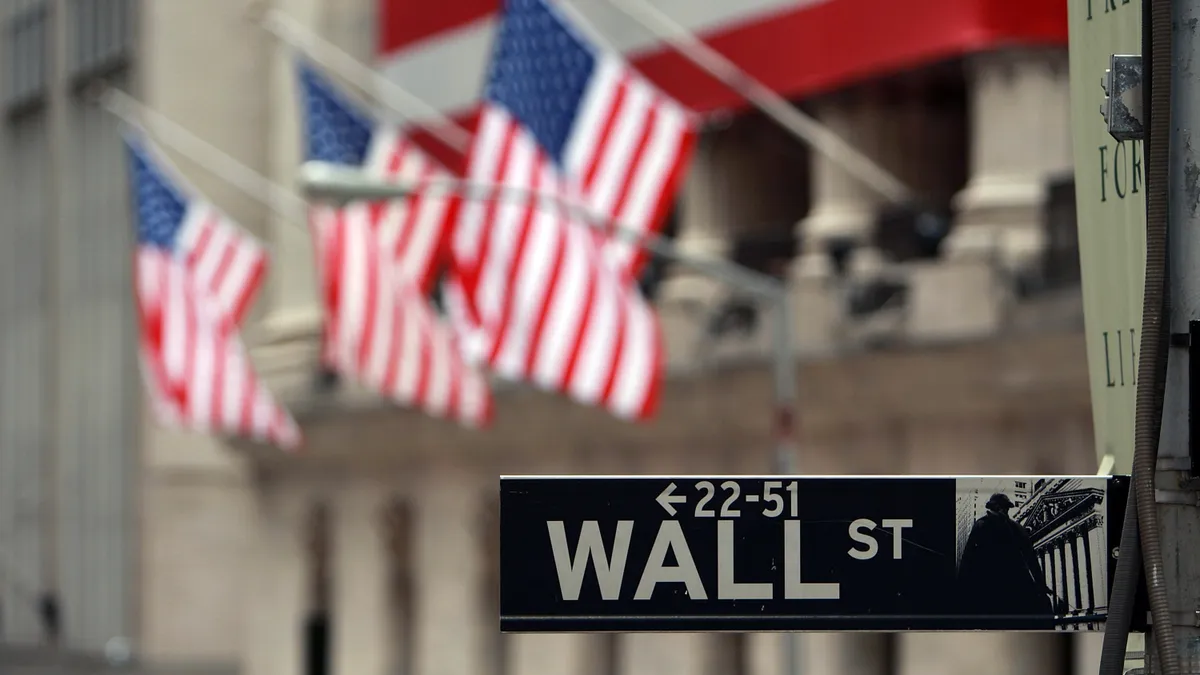Dive Brief:
- Ninety-three percent of CEOs said last month that they are preparing for a U.S. recession this year, yet their confidence has increased compared with the fourth quarter, when their outlook hit a low last recorded during the COVID-19 downturn in 2020, according to a survey by the Conference Board and Business Council.
- “CEOs’ assessments of both current and expected economic conditions picked up from 2022’s extreme lows, but still are far from 2021’s peak,” Conference Board Chief Economist Dana Peterson said in a statement, noting that six out of 10 CEOs say economic conditions are worse than they were six months ago.
- More than half of CEOs (55%) view a global recession as the biggest challenge for their companies this year, according to survey findings. They deem political and government instability and China’s economic performance as the second and third biggest risks.
Dive Insight:
The mixed message from CEOs — with their pessimism easing even as predictions of recession persist — reflects the possibility that the robust economy will continue to stoke high inflation and prompt the Federal Reserve to intensify its most aggressive policy tightening in four decades.
Manufacturing output rose 1% in January after falling in November and December, and retail spending surged 3% in the biggest monthly gain in nearly two years.
Also, the U.S. last month added 517,000 jobs — more than twice the number forecast by economists — and unemployment fell to 3.4%, the lowest level since 1969.
At the same time, the Conference Board’s index of leading economic indicators fell in January for the 10th consecutive month, the research group said Friday.
“Deteriorating manufacturing new orders, consumers’ expectations of business conditions and credit conditions more than offset strengths in labor markets and stock prices to drive the index lower,” Ataman Ozyildirim, the Conference Board’s senior director of economics, said in a statement.
Moreover, inflation has persisted in recent months at a level that has prompted Fed officials to affirm their plan to increase borrowing costs, even at the cost of setting back business performance and softening the labor market.
Price pressures have stayed high and the economy has continued to grow even though the Fed since early last year has raised the federal funds rate from near zero to a range of 4.50% to 4.75%, including a quarter percentage point increase on Feb. 1.
The producer price index for final demand, a measure of what suppliers charge, increased 0.7% in January, the Labor Department said Thursday, in the biggest gain since June.
Also, the Consumer Price Index — fueled by energy and shelter prices — rose 0.5% in January in the biggest increase in three months, the Labor Department said Tuesday.
“The incoming data have not changed my view that we will need to bring the fed funds rate above 5% and hold it there for some time to be sufficiently restrictive to ensure that inflation is on a sustainable path back to 2%,” Cleveland Fed President Loretta Mester said Thursday.
“Indeed, at our meeting two weeks ago, setting aside what financial market participants expected us to do, I saw a compelling economic case for a 50-basis-point increase, which would have brought the top of the target range to 5%,” Mester said in a speech.












